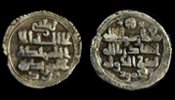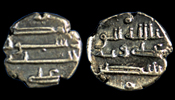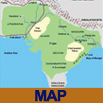|
|
From 712 A.D., for almost next three hundred years, Sindh was subject to Arab caliphs, after which it was subdued by Sultan Mahmood of Ghazni, who conducted several raids into India after 1000 A.D.
The first town assaulted was Debal (Sindh), Muhammad Bin Qasim defeated Raja Dahir and went on to capture his territories for the Umayyad caliphate. Soon Brahmanabad, Alor (Aror) and Multan were also captured. From the departure of Muhammad Bin Qasim in 715 A.D. to the fall of Umayyad Caliphate in 750 A.D., Sindh had nine governors. Umayyads were replaced by Abbasids in 750 A.D.; sindh became part of Abbasid dominions. caliphs from Baghdad Saffa, Mansoor, Hadi, Haroon, Mamoon, Mutassim, Wasiq and Mutawakkil exercised some authority on the governors. But in the reign of the last Caliph, the Governor of Sindh, Umar Hibari, became practically independent, owing nominal allegiance to the Caliph. During the 105 years of Abbasid period when Sindh formed part of their dominions (750 -855 A.D.) thirty one Governors were appointed.
HIBARI (OR HABBARID, AMIRS OF SINDH)
The Hibari Dynasty which had become independent lasted from 855 to 1010 A.D. i.e. till annexation of Sindh by Mahmud of Ghazna, the coinage consists of tiny fractional darhams (called damma) poorly struck, or either Multan or Mansura (Mint not indicated on coins).
Damma wight 0.5 grams traditionally used by the Gurjuras, Parharas, and other medeival Hindu Kingdoms. One damma corresponds to one sixth of a traditional Islamic darham. According to some numismatists Habbarid dynasty lasted from 257 to 400 A.H. (871 to 1010 A.D.).
THE GHAZNAVID DYNASTY (975-1187 A.D.)
The Ghaznavid dynasty was founded by Sabuktagin of Ghazna, upon succession from his father in law, Alp Tigin, a breakaway general of Samanid Sultans. Subuktagin's son Shah Mahmud, expanded the empire in the region, stretched from the Oxus river to the Indus valley, and the Indian Ocean; in the west to Rayy and Hamadan. Mahmud's son Mas'ud was unable to preserve the empire and lost most of it to Seljuks. Masud's son Ibrahim re-established a truncated empire on a firmer basis, but signs of weakness were quite apparent when Masud III died in 1115. Khusro Malik was the last Ghaznavid king who ruled Ghazna. |
|
|



